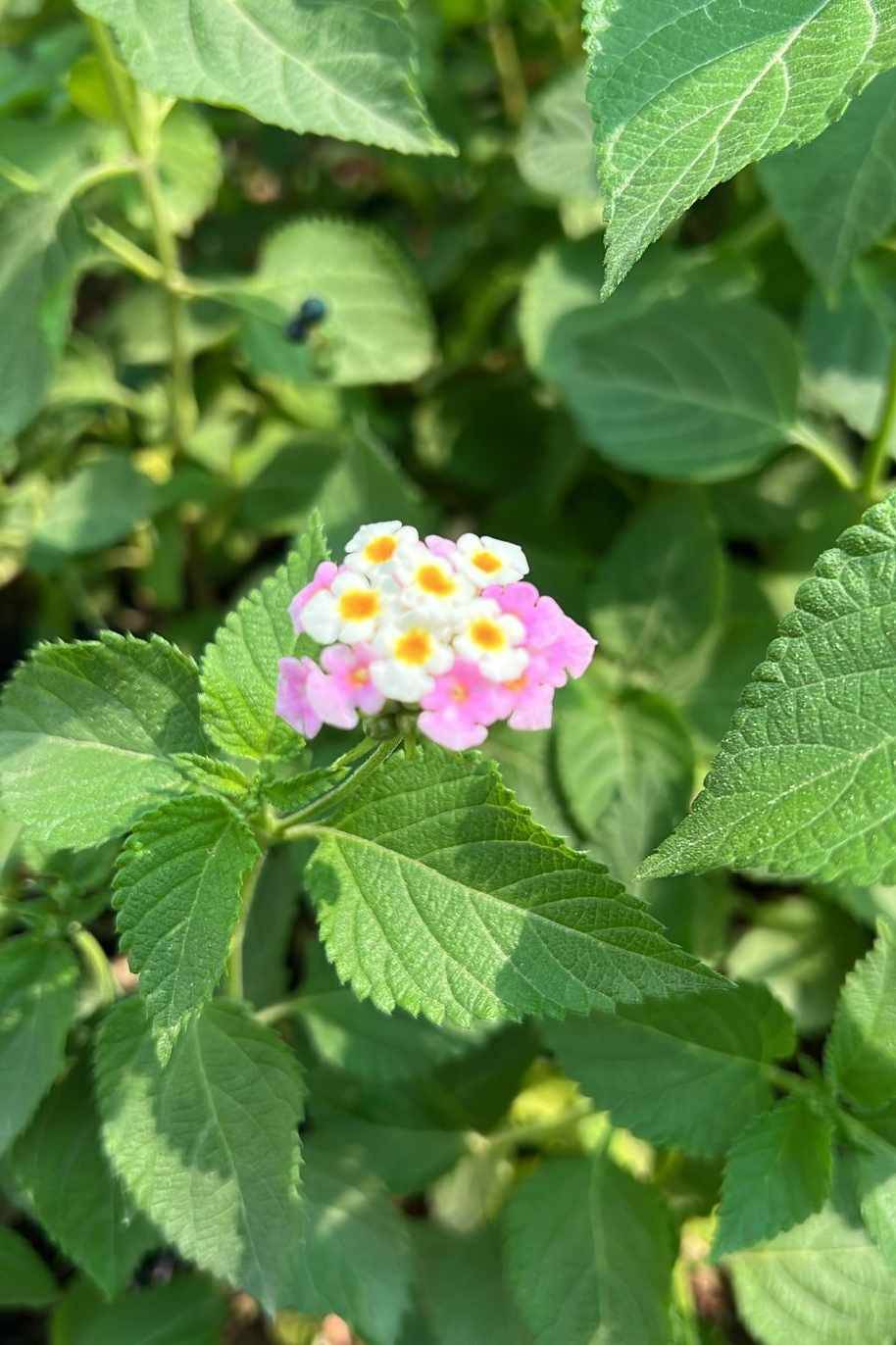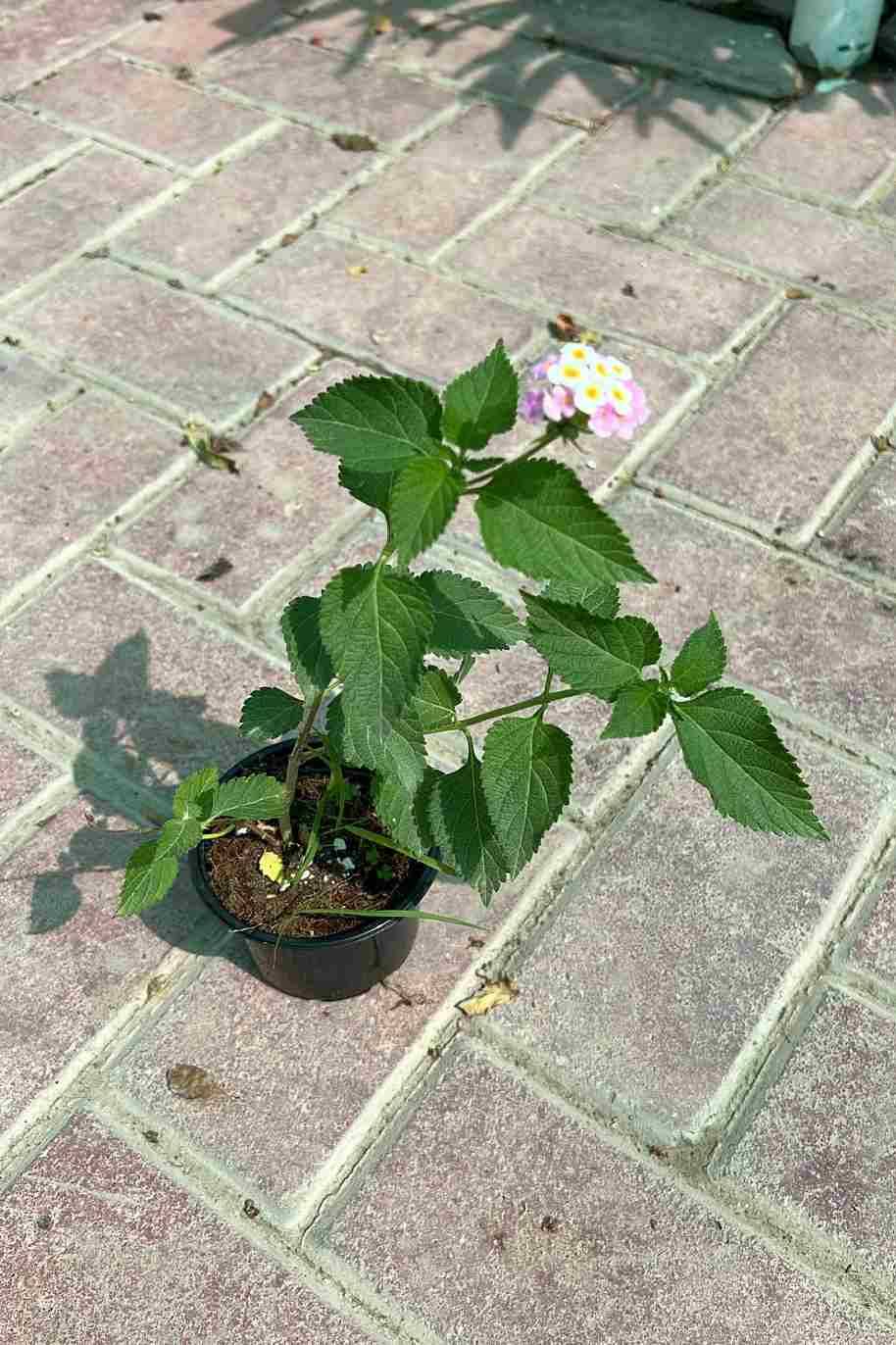Plant Bio
Lantana camara, commonly known as simply lantana, is a colorful and versatile flowering shrub belonging to the Verbenaceae family. Native to tropical regions of the Americas, Africa, and Asia, lantana is prized for its vibrant blooms, attractive foliage, and ability to attract butterflies and pollinators. Here's a general description:
Foliage: Lantana features dense clusters of small, ovate to lance-shaped leaves arranged oppositely along the stems. The leaves are typically dark green in color and have a slightly rough texture. Some cultivars may exhibit variegated foliage with shades of yellow, cream, or purple.
Flowers: One of the most notable features of lantana is its profusion of colorful flowers, which appear in dense clusters (umbels) atop the stems. The flowers are small and tubular, with four petals arranged in pairs. Lantana blooms come in a wide range of colors, including shades of red, orange, yellow, pink, and purple. Some cultivars even exhibit multi-colored flowers that change hues as they mature.
Growth Habit: Lantana is a fast-growing, woody shrub that can range in height from 1 to 6 feet (30 cm to 1.8 meters) tall, depending on the variety and growing conditions. It has an upright to spreading growth habit and may become somewhat leggy if not pruned regularly.
Seasonal Interest: Lantana is known for its long blooming period, which typically lasts from spring to fall or even year-round in frost-free climates. The flowers are highly attractive to butterflies, bees, and other pollinators, making lantana a popular choice for butterfly gardens and pollinator-friendly landscapes.
Toxicity: It's worth noting that all parts of the lantana plant, including the leaves, stems, and berries, contain toxic compounds that can cause gastrointestinal upset if ingested. Keep lantana out of reach of children and pets, and handle it with care when pruning or handling.
Care Guide for Lantana Camara:
Light: Lantana thrives in full sun, so plant it in a location where it will receive at least 6 to 8 hours of direct sunlight per day. Adequate sunlight is essential for promoting robust growth and abundant flowering. In hot climates, some afternoon shade may be beneficial to protect the plant from intense heat.
Temperature: Lantana is well-suited to warm, temperate climates and can tolerate a wide range of temperatures. It is generally hardy in USDA zones 8 to 11 but may be grown as an annual in cooler climates. Protect lantana from frost and freezing temperatures, as prolonged exposure can damage the foliage and stems.
Watering: Once established, lantana is relatively drought-tolerant and prefers slightly dry to moderately moist soil conditions. Water newly planted lantana regularly to help establish a strong root system, then gradually taper off watering as the plant becomes established. Allow the soil to dry out slightly between waterings to prevent waterlogged conditions, which can lead to root rot.
Soil: Plant lantana in well-draining soil with a slightly acidic to neutral pH. Sandy or loamy soils amended with organic matter are ideal for promoting healthy root growth and adequate drainage. Avoid heavy clay soils, which can become waterlogged and suffocate the roots.
Fertilization: Feed lantana with a balanced, slow-release fertilizer formulated for flowering shrubs in spring or early summer. Follow the manufacturer's instructions for application rates and frequency. Avoid overfertilizing, as excessive nitrogen can promote lush foliage growth at the expense of flowering.
Pruning: Regular pruning is essential for maintaining the shape and size of lantana and promoting continuous blooming. Remove spent flowers (deadheading) regularly to encourage the production of new blooms and prevent the plant from setting seeds. Additionally, prune back leggy or overgrown stems in late winter or early spring to rejuvenate the plant and promote bushier growth.
Mulching: Apply a 2 to 3-inch (5 to 7.5-centimeter) layer of organic mulch, such as shredded bark or compost, around the base of lantana to help retain soil moisture, suppress weed growth, and regulate soil temperature. Keep the mulch several inches away from the stems to prevent moisture-related issues and stem rot.
Pest and Disease Control: Lantana is relatively resistant to pests and diseases, but it may occasionally attract aphids, spider mites, or whiteflies, especially during periods of stress or overcrowding. Monitor the plant regularly for signs of infestation, and treat affected plants promptly with insecticidal soap or horticultural oil. Ensure good air circulation around the plant to discourage fungal diseases such as powdery mildew.
Propagation: Lantana can be propagated from seeds, stem cuttings, or division. Stem cuttings taken from healthy, established plants are the most common method of propagation. Dip the cut ends of the stems in rooting hormone powder, then plant them in well-draining potting mix. Keep the cuttings in a warm, humid environment with bright, indirect light until they develop roots and can be transplanted into larger containers or outdoor garden beds.
Container Growing: Lantana can be grown in containers or pots filled with well-draining potting mix, making it suitable for patios, balconies, or other outdoor spaces with limited garden space. Choose a container with drainage holes, and repot the plant every 1 to 2 years to refresh the soil and provide additional growing space. Water container-grown lantana more frequently than those planted in the ground, as containers tend to dry out more quickly.
By following these care guidelines, you can cultivate healthy, vibrant lantana plants that add color and beauty to your landscape while attracting pollinators and enhancing biodiversity. Adjust the care routine based on your local climate, soil conditions, and growing preferences to ensure optimal growth and flowering throughout the growing season.









